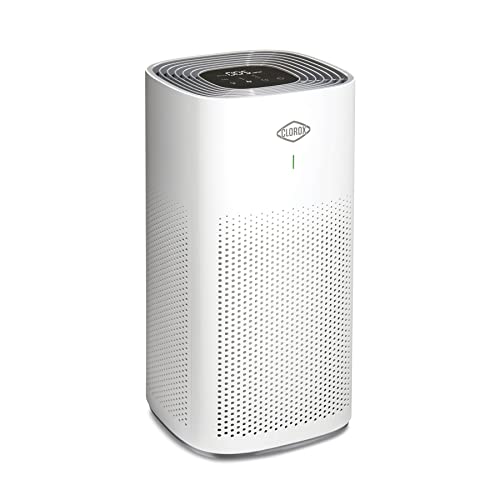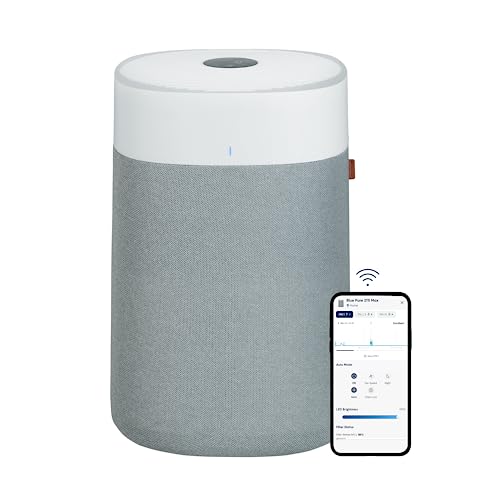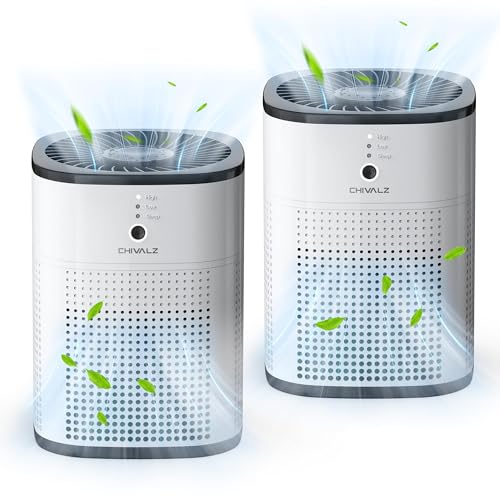2034 Winter Olympics | Know Your Facts
The 2034 Winter Olympics are set to be a remarkable global event, drawing athletes and spectators from every corner of the world. However, large-scale events like these often come with significant environmental concerns, particularly regarding air quality.
This article delves into the air quality challenges associated with the 2034 Winter Olympics and explores innovative solutions being implemented to tackle these issues.
Table of Contents
Understanding the Role of Air Quality in the 2034 Winter Olympics

Ensuring good air quality is fundamental to safeguarding the health, safety, and performance of athletes, spectators, and everyone involved in the Winter Olympics.
Poor air quality not only poses serious health risks, such as respiratory issues but can also significantly affect athletic performance and diminish the overall experience for attendees. Additionally, the environmental footprint of an event of this magnitude necessitates proactive measures to manage air quality.
Main Air Quality Challenges for the 2034 Winter Olympics
Traffic and Emissions from Transportation

A significant challenge for the 2034 Winter Olympics is the spike in traffic and transportation-related emissions.
The influx of athletes, visitors, and logistical operations will substantially increase the number of vehicles on the road, leading to higher emissions of nitrogen dioxide (NO2), carbon monoxide (CO), and particulate matter (PM2.5 and PM10).
Mitigation Tactics:
- Boosting Public Transit Usage: Promoting the use of buses, trains, and shuttle services can decrease the number of vehicles on the roads, thereby reducing emissions.
- Adopting Electric and Hybrid Vehicles: Using electric or hybrid vehicles for Olympic-related operations can significantly cut transportation-related emissions.
- Encouraging Carpooling: Implementing carpooling programs for staff and spectators can further reduce the need for individual vehicles.
Pollution from Industrial and Construction Activities
The preparation and execution of the Winter Olympics require extensive construction, including the development of sports facilities, accommodations, and infrastructure.
Furthermore, ongoing industrial activities in the host city could contribute to air pollution.
Impact of Construction and Industrial Pollution:
- Dust and Particulates: Construction can produce substantial dust, contributing to airborne particulate matter.
- Emissions from Heavy Machinery: The operation of heavy machinery in construction and industrial activities can release pollutants like NO2 and volatile organic compounds (VOCs).
Mitigation Tactics:
- Dust Control Measures: Utilizing water sprays and other dust suppression techniques can help minimize particulate emissions during construction.
- Emission Controls on Equipment: Enforcing emission standards for construction and industrial machinery can reduce harmful pollutant output.
- Sustainable Construction Practices: Employing eco-friendly materials and methods can lower the environmental impact of Olympic infrastructure development.
Weather’s Influence on Air Quality

Weather, especially in winter, can have a profound impact on air quality. Temperature inversions, where warm air traps pollutants near the ground, are common during winter and can worsen pollution levels.
Impact of Weather on Pollution:
- Temperature Inversions: These weather conditions prevent the dispersion of pollutants, leading to higher ground-level concentrations.
- Increased Emissions from Heating: Colder weather typically results in higher use of heating systems, which can lead to increased emissions of pollutants like carbon monoxide and sulfur dioxide (SO2).
Mitigation Tactics:
- Advanced Weather Monitoring: Implementing cutting-edge weather forecasting and monitoring can help predict and mitigate the impact of adverse weather conditions on air quality.
- Reducing Emissions: Encouraging the use of cleaner heating systems and limiting industrial activity during unfavorable weather conditions can help manage pollution levels.
Breakthroughs in Air Quality Monitoring and Control
Recent Developments in Air Quality Monitoring

Effectively monitoring air quality is essential for identifying pollution sources, assessing environmental impact, and ensuring compliance with regulations during the 2034 Winter Olympics.
Technological advancements have significantly improved the accuracy and real-time capabilities of air quality monitoring systems.
Key Innovations:
- Instant Air Quality Sensors: These sensors provide immediate data on pollutants such as PM2.5, PM10, NO2, CO, and O3. Their integration into urban infrastructure allows for continuous monitoring and quick responses to pollution events.
- IoT-Enabled Networks: The Internet of Things (IoT) enables extensive networks of interconnected air quality sensors, providing comprehensive data coverage across cities and regions.
- Portable and Wearable Monitors: Miniaturization has led to the development of portable and wearable air quality monitors, offering personalized exposure data for athletes, spectators, and residents.
- Satellite-Based Monitoring: Satellites offer large-scale air quality observation capabilities, allowing for the tracking of pollution sources over vast regions.
| Technology Type | Benefits | Drawbacks |
| Real-Time Air Quality Sensors | Immediate data, high precision | Requires substantial infrastructure |
| IoT-Enabled Networks | Extensive coverage, highly scalable | Potential concerns over data security |
| Portable/Wearable Devices | Personalized tracking, highly mobile | Limited scope, less comprehensive data |
| Satellite Monitoring | Broad coverage, remote sensing capability | Lower resolution, reliant on satellite passes |
Technologies for Controlling Air Quality

While monitoring air quality is vital, reducing pollution is the ultimate goal. Innovations in air quality control technologies can help mitigate pollutants, ensuring a healthier environment during the 2034 Winter Olympics.
Emerging Technologies:
- Electrostatic Precipitators: Used in industrial settings, these devices remove fine particles like dust and smoke from exhaust gases using electrical charges to capture and collect particles.
- Activated Carbon Filters: Commonly used in air purifiers, these filters absorb harmful gases and VOCs from the air, making them particularly effective in maintaining clean indoor air at Olympic venues.
- Photocatalytic Oxidation (PCO): This cutting-edge technology uses UV light to activate a catalyst, breaking down pollutants into harmless substances like water and carbon dioxide.
- Urban Greening: Planting trees, shrubs, and green walls can naturally filter the air, trapping particulate matter and absorbing gases like CO2.
Case Study: Beijing’s 2022 Winter Olympics Air Quality Efforts Beijing implemented several air quality measures in preparation for the 2022 Winter Olympics, including widespread use of electrostatic precipitators, installation of air purifiers in public spaces, and expansion of urban green spaces.
Results:
- Reduction in PM2.5 Levels: Beijing saw a reduction of over 30% in PM2.5 levels during the Olympic period.
- Improved Public Health: The improvement in air quality led to a noticeable decrease in respiratory problems among the local population and visitors.
| Technology | Application Areas | Pollutants Targeted | Effectiveness |
| Electrostatic Precipitators | Industrial emissions | Particulate matter (PM2.5, PM10) | High |
| Activated Carbon Filters | Indoor air purification | VOCs, odors, gases | High |
| Photocatalytic Oxidation | Indoor/outdoor air purification | VOCs, bacteria, viruses | Medium to High |
| Urban Greening | Urban planning, public spaces | Particulate matter, CO2, O3 | Medium |
Merging Technology with Policy for Better Air Quality
The combination of cutting-edge technologies and robust policies is crucial for achieving optimal air quality during the 2034 Winter Olympics.
While technology provides the tools to monitor and control pollution, policies ensure these tools are used effectively and that necessary regulations are in place.
Policy Recommendations:
- Tighter Emissions Regulations: Governments should enforce stringent emissions standards for vehicles, industries, and construction activities.
- Incentives for Clean Technology: Offering financial incentives to adopt clean technologies like electric vehicles can accelerate environmental improvements.
- Public Education Campaigns: Raising awareness about the importance of air quality and individual contributions to pollution reduction can foster greater community support.
- Global Cooperation: International collaboration between governments, organizations, and the private sector is essential for addressing cross-border pollution and sharing best practices.
Conclusion
As the 2034 Winter Olympics approach, addressing air quality challenges is essential for a successful and healthy event.
Leveraging advanced monitoring and control technologies, implementing effective policies, and fostering international cooperation will set new standards for environmental responsibility at major global events. The lessons learned will benefit the Olympics and contribute to long-term air quality improvements for the host city and beyond.
________________
FAQs (Frequently Asked Questions)
1. Why is air quality crucial for the 2034 Winter Olympics?
Answer: Good air quality is essential for the health and safety of athletes, spectators, and local residents. Poor air quality can impair athletic performance and increase the risk of respiratory issues.
2. What are the main air quality challenges for the 2034 Winter Olympics?
Answer: Challenges include increased emissions from transportation, industrial activities, and construction, as well as the impact of winter weather conditions like temperature inversions.
3. How can air quality be improved during the 2034 Winter Olympics?
Answer: Key strategies include enforcing stricter emissions standards, promoting public transportation, increasing green spaces, and using advanced air quality monitoring and control technologies.
4. What technologies are being used to monitor air quality during the Olympics?
Answer: Advanced air quality sensors, IoT-enabled monitoring networks, portable and wearable devices, and satellite-based systems are among the technologies being deployed.
5. What are some examples of air quality control technologies?
Answer: Examples include electrostatic precipitators, activated carbon filters, photocatalytic oxidation, and urban greening initiate
Disclaimer: The views and opinions expressed in this review are based on the author’s personal experience and research. Individual results may vary. Always refer to the manufacturer’s guidelines and instructions for proper usage and maintenance of the product.
Lassowond
-
 Clorox Air Purifiers for Home, True HEPA Filter, Large Rooms up to 1,500 Sq Ft, Removes 99.9% of Mold, Viruses, Wildfire Smoke, Allergens, Pet Allergies, Dust, AUTO Mode, Whisper Quiet$119.99
Clorox Air Purifiers for Home, True HEPA Filter, Large Rooms up to 1,500 Sq Ft, Removes 99.9% of Mold, Viruses, Wildfire Smoke, Allergens, Pet Allergies, Dust, AUTO Mode, Whisper Quiet$119.99 -
 Shark Air Purifiers for Home Large Room with NeverChange Air Filter, 5 Year HEPA Filter, Covers 650 Sq. ft, Odor Neutralizer and Clean Sense Technology, Removes 99.98% of Dust & Allergens, HP152$179.99
Shark Air Purifiers for Home Large Room with NeverChange Air Filter, 5 Year HEPA Filter, Covers 650 Sq. ft, Odor Neutralizer and Clean Sense Technology, Removes 99.98% of Dust & Allergens, HP152$179.99 -
 Nuwave OxyPure ZERO Air Purifiers with 20 Yr Washable and Reusable Bio Guard Tech Air Filter, Large Room Up to 2002 Ft², Air Quality Monitor, 0.1 Microns, 100% Capture Allergies, Smoke, Dust, Pollen$359.99
Nuwave OxyPure ZERO Air Purifiers with 20 Yr Washable and Reusable Bio Guard Tech Air Filter, Large Room Up to 2002 Ft², Air Quality Monitor, 0.1 Microns, 100% Capture Allergies, Smoke, Dust, Pollen$359.99 -
 AeraMax Air Purifier for Allergies$211.82
AeraMax Air Purifier for Allergies$211.82 -
 WeGuard Air Purifiers K300 HEPA$69.99
WeGuard Air Purifiers K300 HEPA$69.99 -
 HIMOX Air Purifier HEPA 14 | 1560 Sqft$180.68
HIMOX Air Purifier HEPA 14 | 1560 Sqft$180.68 -
 Fellowes AeraMax 100 Air Purifier for Mold, Odors, Dust, Smoke, Allergens and Germs with True HEPA Filter and 4-Stage Purification – 9320301, White, Small$129.45
Fellowes AeraMax 100 Air Purifier for Mold, Odors, Dust, Smoke, Allergens and Germs with True HEPA Filter and 4-Stage Purification – 9320301, White, Small$129.45 -
 BLUEAIR Air Purifiers for Large Home Room, HEPASilent Air Purifiers for Bedroom, Air Purifiers for Pets Allergies Air Cleaner, Smart Air Purifier, Virus Air Purifier for Dust Mold, Blue Pure 211i Max$244.99
BLUEAIR Air Purifiers for Large Home Room, HEPASilent Air Purifiers for Bedroom, Air Purifiers for Pets Allergies Air Cleaner, Smart Air Purifier, Virus Air Purifier for Dust Mold, Blue Pure 211i Max$244.99 -
 Air Purifiers for Bedroom, CHIVALZ Air Purifiers for Home, Quiet Air Cleaner with 24dB Sleep Mode, H13 HEPA Filter for Allergies, Pollen, Smoke, Pet Dander, Dust, White & Black (2 Pack)$59.84
Air Purifiers for Bedroom, CHIVALZ Air Purifiers for Home, Quiet Air Cleaner with 24dB Sleep Mode, H13 HEPA Filter for Allergies, Pollen, Smoke, Pet Dander, Dust, White & Black (2 Pack)$59.84 -
 HoMedics TotalClean 4-in-1 Tower Air Purifier, 360-Degree HEPA Filtration for Allergens, Dust and Dander with Ionizer for Home, Office and Desktop, Night-Light and Essential Oil Aromatherapy (White)$53.75
HoMedics TotalClean 4-in-1 Tower Air Purifier, 360-Degree HEPA Filtration for Allergens, Dust and Dander with Ionizer for Home, Office and Desktop, Night-Light and Essential Oil Aromatherapy (White)$53.75 -
 2 Pack Air Purifiers for Bedroom 5 Layers H13 HEPA Air Filter, 22db Quiet Air Purifiers for Home Pets,Desktop,Kitchen,Filter 99.99% Smoke,Pollen, Pet Dander,Dust, Ozone Free, Available for California$79.99
2 Pack Air Purifiers for Bedroom 5 Layers H13 HEPA Air Filter, 22db Quiet Air Purifiers for Home Pets,Desktop,Kitchen,Filter 99.99% Smoke,Pollen, Pet Dander,Dust, Ozone Free, Available for California$79.99 -
 Dayette HEPA Air Purifiers for Home Large Room, CADR 400+ m³/h Up to 1720 Sq Ft, H13 Ture Hepa Air Filter Cleaner for Allergies Pet Dander Smoke Dust with 22dB Sleep Mode for Bedroom, White$118.99
Dayette HEPA Air Purifiers for Home Large Room, CADR 400+ m³/h Up to 1720 Sq Ft, H13 Ture Hepa Air Filter Cleaner for Allergies Pet Dander Smoke Dust with 22dB Sleep Mode for Bedroom, White$118.99















*This page contains affiliate links, and We earn commissions from qualifying purchases through these links. Please review our Affiliate Disclaimer for details.